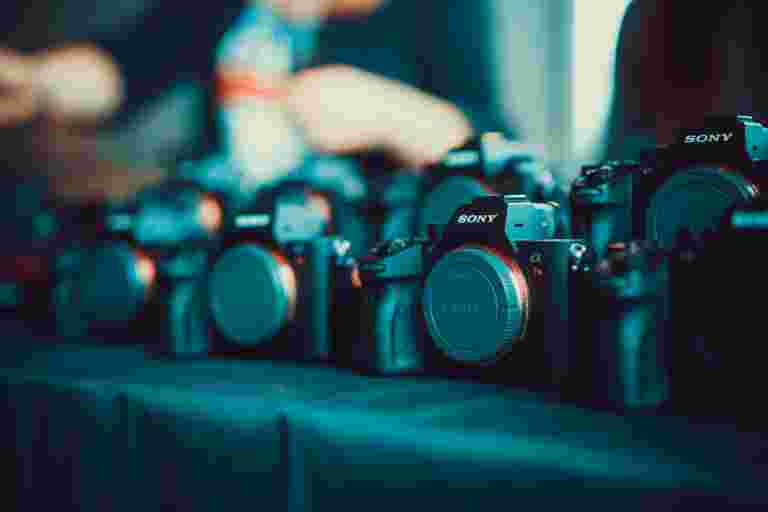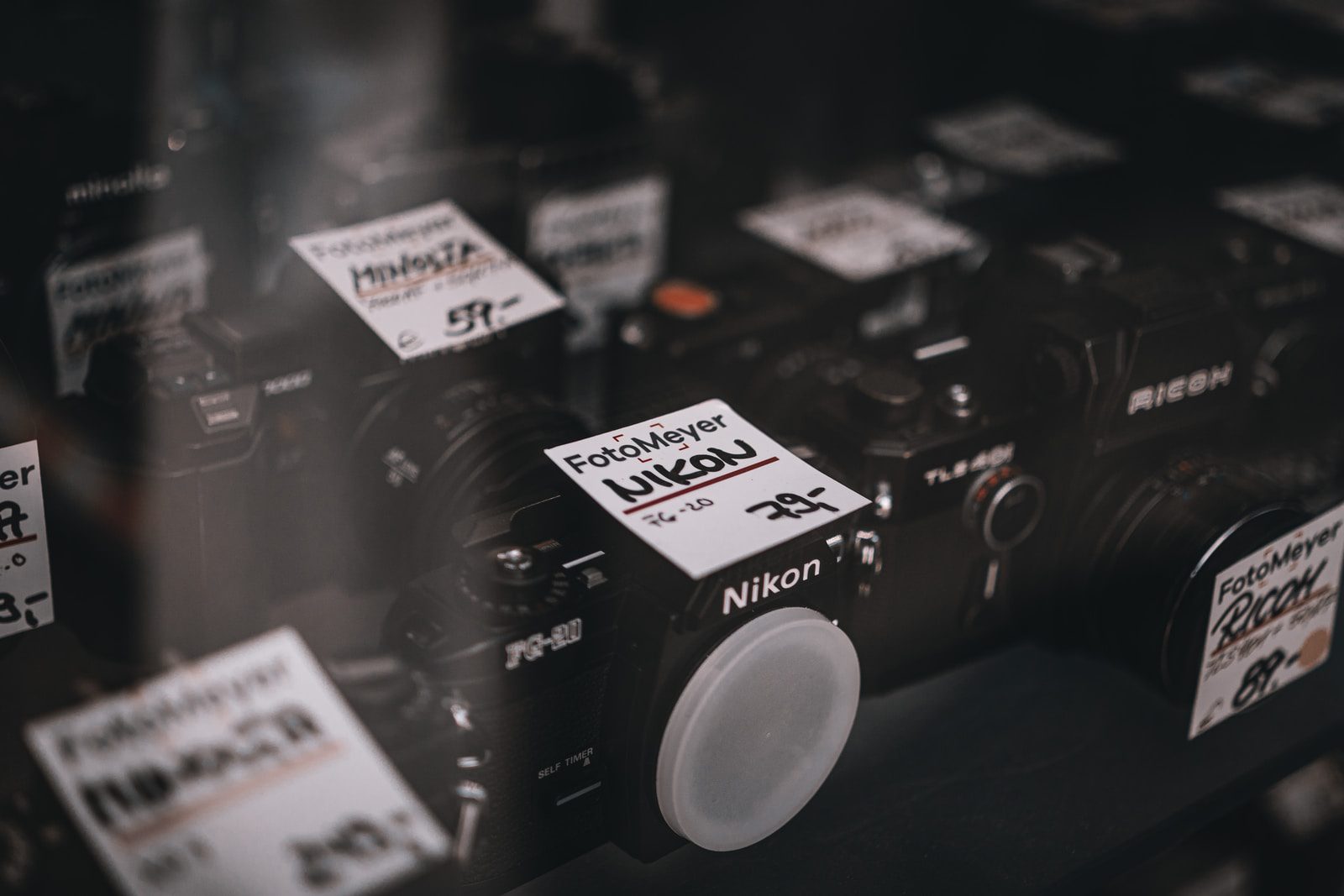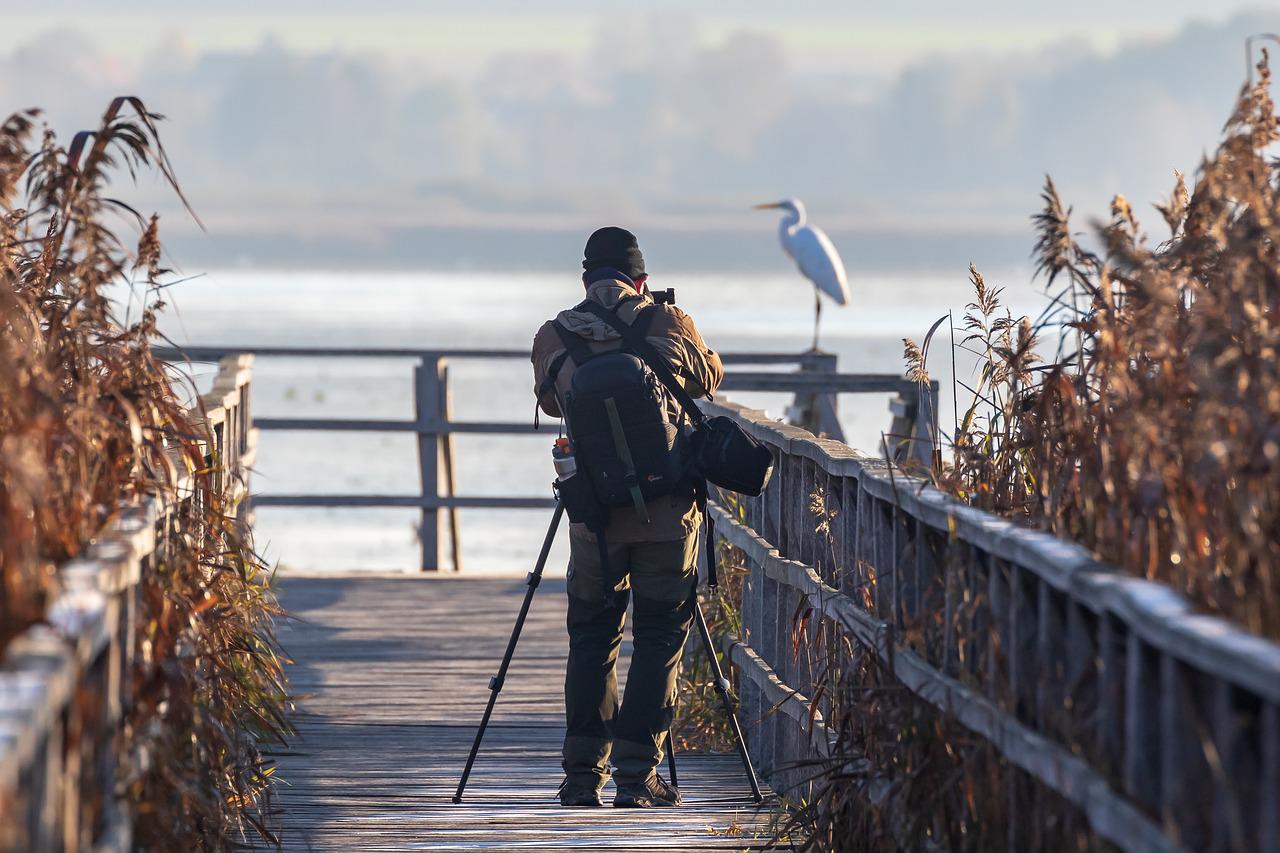Renting a lens for your camera is a great low-cost option to be able to use the camera gear you want or need.
If you’re still on the fence about renting a lens vs. buying a lens we have a guide to help you decide are camera rentals worth it.
Believe it or not, but there is a real joy with renting a lens, if you keep reading, you’ll find out what it is.
For those that already know they want to rent a lens, the next question is “What lens should I rent?”
While that can seem daunting, we’ll help break it down and show you the best lenses to rent and pair with your existing gear. Then be sure to check out our other guide to find the cheapest place to rent a lens from.
Quick Links - Camera Lens to Rent by Brand
If you’re trying to find a specific lens recommendation, check out our Lens Hub and the links below to find the best lens for your specific camera or a type of photography.
Table of Contents
ToggleWhat Lens Should I Rent?
For most photographers the first question you’ll want to ask yourself is ‘What type of photography am I doing?’ Then ask, ‘What lens is best for that type of photography?’.
Details about the quality of the lens, which brand to select, and which lenses are compatible with your camera are all important questions. However, you need to first need to be clear about what you are planning to shot, and what type of lens is best for that.
For many photographers they just make do with whatever they have. The joy of renting a lens is that you get to decide what you want to use.
So while you can make that kit lens do a lot, it’s really empowering to choose a lens for a specific specification it has.
Do you need a really fast lens with a large aperture to give you outstanding bokeh? Or maybe something with a long reach to grab that detail of a distant subject?
When you’re renting a lens, you can make a choice based on a single lens attribute. Whereas when you are purchasing a lens people tend to be a little more practical about balancing performance and cost.
If you’re worried about cost, we breakdown the numbers of renting a lens so you can judge if you should rent or buy.
So don’t be afraid to rent that prime with a f1.4 aperture. Or try out that 400mm range on a telephoto.
One of the purposes of renting a lens rather than buying one is to see if you like or need that type of feature in your everyday photography needs.
The Two Things to Look for When Renting a Lens
For the vast majority of photographers, the decision on what lens to rent is going to come down to one of two things. Or maybe both of them.
As you might have guessed that is the Aperture and the Focal Length.
APERTURE
Although focal length is typically what a photographer will start with when deciding what lens to get, it’s the aperture size that determines the final decision.
If you have your choice between a f/4.5 and an f/2.8 you’d take the f/2.8. It’s just going to be that much more versatile.
While researching the most popular camera lenses to rent I found that of the 30 most popular lenses 80% of them were f/2.8 or wider (meaning a larger aperture).
When I got what I use as my go to lens, it was the aperture size that helped me finalize my decision.
When buying a new lens, the decision to go with a smaller aperture over that faster lens may be the difference of hundreds or thousands of dollars. However, when renting a lens the price difference is much more digestible.
I’m not advocating that you have to rent the most expensive lens, but the joy of renting a lens is to try something out that you may not normally buy new. I don’t own a surfboard (since I live in the mountains) but I’d be excited to rent one to try it out and see if I like surfing.
So unless you know you aren’t going to need that fast aperture, I would recommend that you look for a lens with at least a f/2.8 aperture. The added bokeh, depth, and available light is worth a try at least once.
FOCAL LENGTH
As mentioned above, focal length is probably what you are first narrowing down your search by. Assuming you know what focal length you need for your particular needs. If you’re not, then we have guides below of the most common lens specs for the most popular types of photography.
When renting a lens, you may want to try out a zoom if you’re not sure what you want. That can help give you a feel for what focal range you naturally gravitate towards when shooting. Which may help you make an easier decision for your next camera lens purchase.
Don’t be afraid to try out a really wide lens or a really long lens either. Especially if you never have gotten out of that standard or normal focal range (35mm to ~85mm).
Trying something new and having to look at your frame from a little different perspective will help spark some creativity. It may also help you define your particular photographic style.
What Lens Specs Do I Need to Look For?
We have an extensive article on understanding camera lenses and how to select a lens. There we cover almost 20 different types of photography, and what you’d look for in a lens for that.
Here we’ve captured a few of the most popular types of photography so you can figure out what lens specs you need to look for when renting a lens.

RECOMMENDATIONS FOR ASTROPHOTOGRAPHY LENSES
| FOCAL LENGTH | APERTURE | TYPE | LENS |
| 14mm – 35mm | f/2.8 or Larger | Wide Angle | Primes |
Since the beginning of mankind we’ve looked heavenward to the stars. There’s something about the vastness of space and the countless stars that makes one think of something bigger than themselves.
So there’s no wonder why photographers want to capture the night sky’s natural beauty.
With Astrophotography you’re generally dealing with long exposures so it’s possible to get away with a smaller aperture but if you’ve got 2.8 or larger you’ll have more flexibility with the kind of shots you can get.
Star trails in particular are created with a long exposure while staying focused on a single point.
For most people, in order to start shooting you’ll just need your camera, lens, and a tripod. Those that are looking to do more “deep space” photography, for personal or scientific use you’ll need to get a telescope and corresponding mount. This will take the place of your typical lens.
For those getting started there is a simple formula to help you determine the exposure speed you need to get star trails, called the 500 rule. All you do is divide 500 by the focal length of the lens you’re using. So for example 500 / 55mm lens = 9 second exposure.
Remember that increasing your ISO is going to result in more noise so being able to open up the aperture is going to help you keep your ISO levels lower.
Lens flare is also a specific feature you should look at for the lens you are considering.
You can use a Zoom lens here but a Prime might be a better option. For a given price a Prime lens compared to a Zoom lens is going to give you better image quality and a larger aperture.
For more information check out this article on Astrophotography.
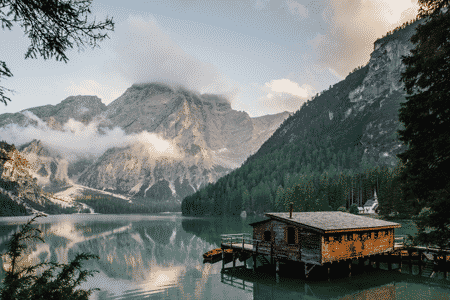
RECOMMENDATIONS FOR LANDSCAPE LENSES
| FOCAL LENGTH | APERTURE | TYPE | LENS |
| 14mm – 35mm | f/4 or Larger | Wide Angle | Zooms & Primes |
Traveling, exploring, waiting for the beautiful light and simply enjoying the time in nature can be amazing.
For landscape photography the most important factor is the focal length you choose.
You could, technically speaking, photograph with just about any lens, going with a lens with an extremely wide angle will allow you to capture so much more of the scene. Lenses under 35mm are considered wide, under 20mm is extremely wide and most commonly used for landscape photography.
If you want to get images with wildlife or isolate a specific subject then consider a telephoto lens.
With landscapes you don’t usually shoot at f/2.8, at least not when trying to achieve a small depth of field. Since this is more or less a norm for landscape photography most photographers shoot between f/5.6 and f/16 because you want everything worth shooting.
Although some purists, or Ansel Adams fans, would push you towards f/64 for a sharply focused image.
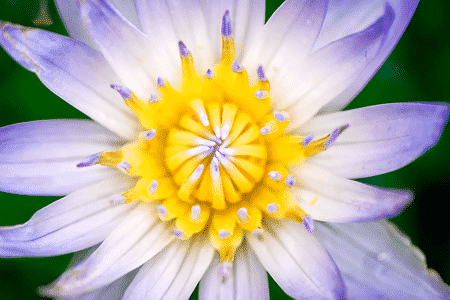
RECOMMENDATIONS FOR MACRO LENSES
| FOCAL LENGTH | APERTURE | TYPE | LENS |
| 30mm – 100mm | f/2.8 or Larger | Macro | Primes |
In technical terms Macro photography refers to capturing an object on your camera sensor at a 1:1 ratio. This essentially makes small objects look bigger. That’s because other lenses represent objects at a ratio of about 1:2.8
Although you’ll often see the term “Marco” (or “Micro” for Nikon) in the lens name to help identify the type of lens, you’ll also want to make sure it’s a Prime lens. Many Zoom lenses will call out that they are a Macro lens but they are not a true one.
Since you are essentially enlarging the detail of an object you have to really pay attention to the details of your subject and its surrounding.
This also extends to planning your shots and dialing in on just the right plane of focus. Any camera shake will also be magnified so using a tripod or having in-body or in-lens stabilization are great tools.
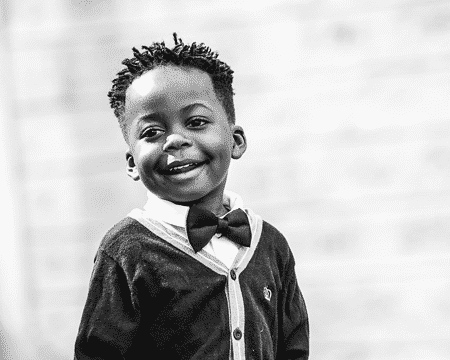
RECOMMENDATIONS FOR PORTRAIT LENSES
| FOCAL LENGTH | APERTURE | TYPE | LENS |
| 50mm – 200mm | f/2.8 or Larger | Telephoto | Primes & Zooms |
Before you even pull out your camera you should take some time getting to know who you’re going to be photographing. Even if you’re working with a model and have a specific vision for what kind of shot you want, make sure to spend some time talking with them and communicating what you’re trying to do.
Good portrait photographers capture or evoke a sense of emotion in their images. This is a lot easier when you understand the personality of your subject.
Lighting is one of the best tools you have to communicate the feeling of your picture. After all, photography is about capturing light. Often you’ll want a nice diffused light source, which is why the “golden” or “blue” hours are so popular. You can also achieve this in a studio with good lighting equipment. Although don’t forget to experiment with strong lights or shadows to add more drama or contrast to a shot.
One of the best ways to get great shots requires a lot of work before you ever get to a shoot. Spend time looking at other’s portrait photography. This will give you a sense for what you like, as well as what you might want to avoid.
You can even make your own personal gallery or clipping of compositions and poses that you like to have a future reference.
Some of the best results come when you’re able to capture genuine reactions and expressions. Don’t try to force this. Just be patient. As your subject sees that you’re not hurried or anxious they too will start to relax and open up.
Most photographers will use a 50mm or 85mm Prime for portraits. Below we have a quick breakdown of the focal lengths we recommend.
35mm lenses – Great for group shots or for showing more than just your subject isolated (perhaps their workplace, the environment, streets, nature and so on).
50mm lenses – Ideal for full body shots and casual shooting
85mm lenses – Perfect combination of focal length and bokeh, and are also most usable for head shots
135-200mm lenses – Best for when you can’t be too close to your subject, or you’re looking for the most background blur and flat faces due to such long lengths
Having a lot of posing ideas in mind is key. One simple trick is to have your subject do a 2/3 turn away from the camera, rather than looking at you straight on. If you need some ideas here are a bunch of great examples of poses.
A couple other reminders. Try and have them hide their hands. This can be in their pockets, under their chin, on someone’s shoulder, etc. This will help make their face the focus of the image. Also have them slightly tilt their chin down to avoid nostril shots.
RECOMMENDATIONS FOR PRODUCT LENSES
| FOCAL LENGTH | APERTURE | TYPE | LENS |
| 50mm – 100mm | f/2.8 or Larger | Standard & Telephoto | Primes & Zooms |
Even before the pandemic there was a big increase in e-commerce. So more than ever people are getting into Product photography to capture images for product placement on Amazon or to showcase hand-made gifts on Etsy or other sites.
Many people will just grab their cell phone to get some shots but if you want to stand out from your competitors then getting some high-quality shots with your DSLR or Mirrorless will really help you stand out.
Consider if studio shots, most often seen as the product with a white background, or a lifestyle shot, that shows the product in use or some sort of scene, is best for your product. As with any marketing material make sure to think about your target audience and what you want to communicate.
Standard lenses are a good fit here since they will help show your product without distortion. Since 50mm is very close to our natural field of view it’s a popular choice. Although something a little longer can help give you a nice smooth bokeh background to keep the focus on your product.
Some gear to help assist you with your product shots are a table tripod, a photo light box or a white backdrop, and some metallic reflectors.
These tools will help you get clean product shots with a clean simple background and control the lighting so you’re not getting distracting shadows and focus the light in the right places.
You need to make sure to really pay attention to the details of your shots or you’ll be stuck doing a lot of post photoshop work.
A quick tip for a white background shot is to use something like a large white poster, sometimes referred to as a “sweep”. Make sure to set it up so that it curves from your table up to a wall. This way you won’t have any horizontal lines in your shots.
In addition to your main light source use a fill light to soften the natural shadows. A fill light is a less-intense source of light to complement the primary one. Just make sure to be mindful of the color temperature (i.e.: warm light, cool light) so it doesn’t cast odd colors. You can also use reflectors to direct and bounce the light from your main source.
For other great tips on setting up Product Photography shots check out this article.
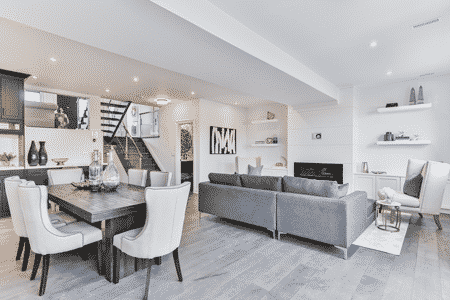
RECOMMENDATIONS FOR REAL ESTATE LENSES
| FOCAL LENGTH | APERTURE | TYPE | LENS |
| 14mm – 35mm | f/2.8 or Larger | Wide Angle | Zooms & Primes |
With the popularity of sites like Airbnb, VRBO, or other short-term rental property webpages, real estate photography is no longer just for realtors.
Regardless of whether you’re trying to sell a property or get someone to rent one the intent is to capture or document the beauty and uniqueness of a space. This is both inside and out.
It’s important to try and put yourself in the mindset of your audience. What kind of emotion or feeling are you trying to convey? Comfort, warmth, simplicity, fun, luxury, space?
After you determine the emotion you’re trying to evoke you can plan your shots based on that.
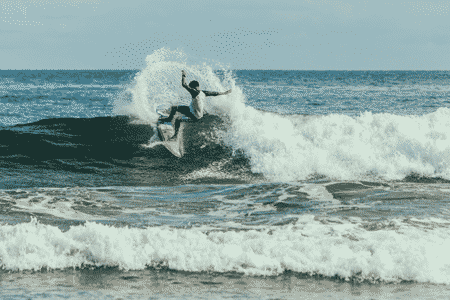
RECOMMENDATIONS FOR SPORTS AND ACTION LENSES
| FOCAL LENGTH | APERTURE | TYPE | LENS |
| 85mm – 400mm | f/4 or Larger | Telephoto | Zooms & Primes |
Rent Sports and Action Photography Kits
Sports photography can be a tricky subject to shoot.
If indoors, you need to freeze the action by selecting a fast shutter speed, but you’re often limited by the low amount of light available. Most lenses don’t have apertures big enough to let in more light so you’re left with raising the ISO speed and this doesn’t always look good.
The faster the action, the faster your shutter speed will need to be. Most often you’ll want something between 1/500 sec – 1/2000 sec.
Outside sports is a lot easier since the sun provides plenty of light. With those conditions, shooting with shutter speeds over 1/250 is not a challenge, even if the lens you use has an aperture of f/5.6.
However, if you’re going to be shooting indoors or at night you’ll want to invest in lens with an aperture that is f/2.8 or larger.
You definitely don’t want to get in the way of the game in any way. There’s nothing worse than getting heckled by the crowd for interfering in the action. And since you’re not wearing a jersey you’ll be stuck in the stands or sidelines anyway. For both of these reasons you want to have a Telephoto lens with a really good reach.
But just as if you were playing, you need to keep your head in the game. If you’re not paying attention to the game you might miss capturing an exciting moment.
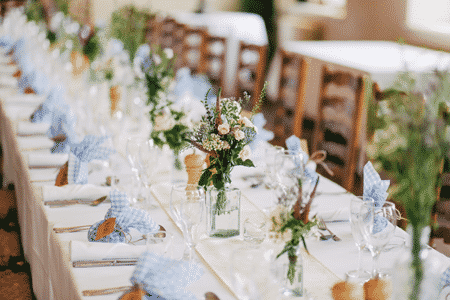
RECOMMENDATIONS FOR WEDDING LENSES
| FOCAL LENGTH | APERTURE | TYPE | LENS |
| 20mm – 200mm | f/2.8 or Larger | Telephoto | Zooms & Primes |
Rent the Best Wedding Photography Kits
Weddings are one of those lifetime events for couple. Marriage is a divinely inspired relationship that continues and creates family ties that are central to our life here and beyond.
No pressure right? 🙂
I say that a little ‘tongue in cheek’ but in reality I do hold marriage, which starts with the wedding, as a really sacred experience. So if you’re trying to capture such a special event you’ll want to be as prepared as possible.
You should plan on being able to get tight close ups of the bride and groom as well as shots that will capture large groups of family and friends. This is why you recommendation has such a wide focal range.
Since there isn’t a lot of time to switch between lenses a big Zoom is far more convenient. Though if your more comfortable with how things flow with at a wedding a couple of Prime lenses can help you when you want to get a specific look.
Since weddings take place both outside and inside it is best be prepared with f/2.8 lenses or even bigger.
Find the best wedding lenses for Canon, Nikon, Sony, and more.
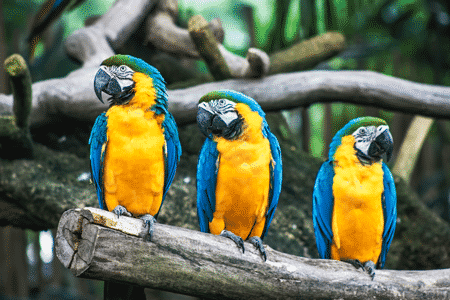
RECOMMENDATIONS FOR WILDLIFE LENSES
| FOCAL LENGTH | APERTURE | TYPE | LENS |
| 200mm – 600mm | f/4 or Larger | Telephoto | Zooms & Primes |
Rent Wildlife Telephoto Lenses
And you thought finding your spouse was about being in the right place at the right time. Wildlife photography definitely requires some persistence and a bit of luck!
One way to help you get in the right place it to be prepared with a long Telephoto lens. Unless you have your ninja black belt you probably won’t have a lot of luck trying to sneak up on a wild animal without disturbing it. So a long focal length will help get you as close to your subject as possible.
For a similar reason we prefer Zoom lenses here. It just allows you to frame your shot without so much moving around.
Other important feature to consider are a fast auto focus and weather sealing so you’re prepared for all sorts of conditions. (Just remember a lens with weather sealing, when your camera isn’t weather sealed doesn’t do much good).
It’s also nice to have an aperture that’s big enough to be used when there is not a lot of light. Animals are often the most active in dusk and dawn.
But above all remember to respect the Wildlife. Not only do you not want to disturb their natural behaviors but you want to keep yourself at a safe distance.
To Rent or Not to Rent
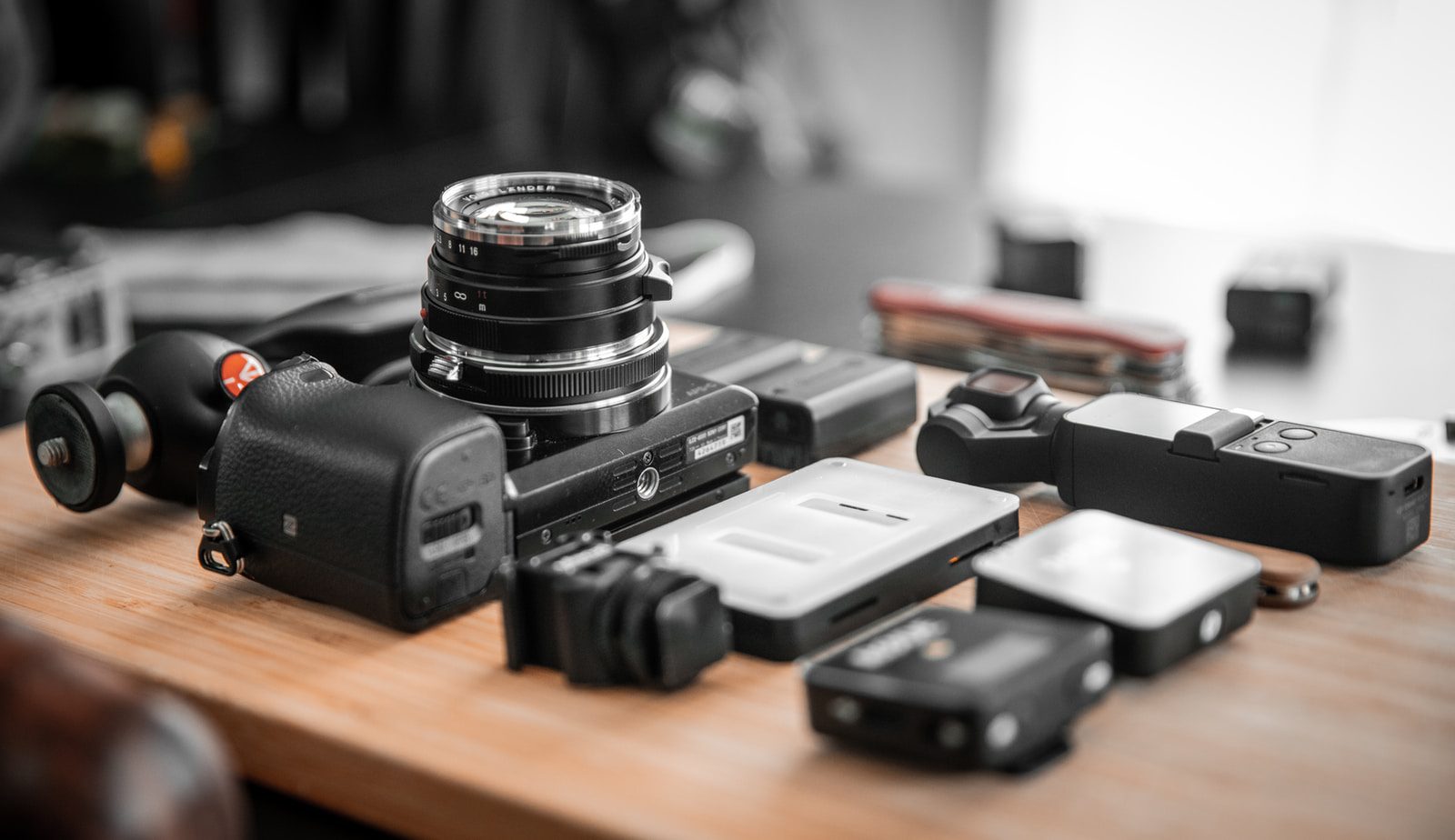
We go thorough more questions in our post on whether camera rentals are worth it or not, but here’s a couple quick questions to ask yourself before you rent a lens or other camera equipment.
This sounds obvious but you should rent the camera lens that you ‘need.’ The tricky part is figuring out what lens you need.
First off, in determining what camera lens you should rent, is to determine which lenses will work for your camera.
For many that will just be narrowing or filtering your search results to the camera brand. Beyond that you need to make sure you’re aware of the type of lens mount you have on your camera. With more and more mirrorless cameras out there, if you have a DSLR you need to pay attention to the lens mount, not just the lens brand.
There are also great 3rd party lenses that can make for less expensive options, and often have as good or maybe better specs than the main brand lens.
Even for someone that knows a lot about lenses it can be hard to keep up with all the options and features, so be willing to ask questions. There are also a lot of lists people put together of lens recommendations for specific camera models. Our Lens Hub is a great resource for finding a lens for your camera based on photography type or a specific model.
You should rent a camera lens when the lens or lenses you have won’t work for that you are trying to photograph. This is a simple statement but there’s usually an emotional barrier that keeps us from making this decision.
Often it feels like a financial restraint, because we don’t want to spend money on something we don’t get to keep. This is a healthy reaction to have, to prevent us unnecessary spending.
The key word here is ‘unnecessary.’
You may reason that it is unnecessary to rent a lens when you don’t have a good reason for it. But renting a lens is a great option when buying a lens would be unnecessary.
So, it’s a great idea to rent a lens if you only need a lens for a short time; like one trip or one photoshoot. Or if you need a lens for a particular type of shot you are trying to get. In that case, having the right gear for the job becomes a good financial decision and will save you a lot of time and effort.
To answer the question of ‘when should you buy a camera lens?’ you need to determine what criteria you would use to consider something as a necessity.
For some, necessity will revolve around cost. For example, ‘do I have extra money in my budget to purchase a new lens?’
For others, necessity will be determined by the use case for a new lens. A professional photographer might find a lot of uses for a long telephoto lens, where an avid photographer may only use it on one or two trips in their lifetime.
So common criteria you can use to judge whether it’s a good purchase or not are:
- Does the cost fit in my budget
- Use cases for a new lens
- Do I have good alternatives, such as renting a lens
- Added value of adding a new lens to your equipment (ROI)
- Emotional benefit/joy over time of purchasing a new lens
- New opportunities or creative avenues that it might open
After going through these criteria you should be able to quickly determine if you should just rent a lens or if you are ready to buy one. So the next question you’d ask is “How do I choose what lens to get?“
BestPhotographyGear, as a happy user of BorrowLenses, joined their affiliate program in order to provide a means for this site to earn advertising fees by advertising and linking to offers from BorrowLenses.
Final Thoughts
When finding the best camera lenses to rent you first need to start by asking yourself what you are trying to do with your shoot.
For something like a studio shoot that can be pretty obvious since you can know and can control the environment. However, for something like a wedding or if you are going to do some photography while traveling you have to be prepared for whatever comes.
Armed with the guide and details above about what lens specifications you need for certain types of photography you’re ready to rent your first or next lens
If you’re curious about renting a lens or other gear, see what Special Offers / Coupons are available right now.
Our guides and lens lists based on specific cameras and photography types will help you quickly target the exact lens you need. If you have questions along the way, feel free to ask us a question.
Next in our guide for renting lenses and other camera gear is “Where should you rent camera lenses from.”
Find the Perfect Lens
Whether you are learning what makes a great lens or trying to narrow down your selection to the perfect choice we have you covered.
Related Articles
The Best Place to Rent a Camera Lens
Searching for "camera lens rentals near me"? How can you be sure you're getting the best price and options from...
Read MoreAre Camera Rentals Worth It?
Should I spend my money on buying a camera lens or renting a camera lens? Are you wasting your money...
Read MoreFirst and foremost, I’m a husband and father. Then professionally I’m photographer, designer, blogger, and Esty store owner. My homebase is near the stunning Wasatch mountains in Utah but I love traveling with my family as part of our homeschooling journey. I also love teaching and helping out others. My faith is one of the biggest aspects of my life and brings be a consistent joy that I haven’t found in anything else. My main blog is BestPhotographyGear.com and I strive to make photography simple for anyone looking to learn or find gear for their individual needs. By nature, I like to study, research, and analyze things and I use that help provide the best advice and reviews I can.

